The History Of FIAT Punto

The Fiat Punto is a supermini produced by the Italian manufacturer, Fiat, since 1993. It is currently in its third generation.
Internally codenamed Project 176, the Punto was announced in September 1993 and launched in early 1994 as a replacement for the aging Fiat Uno. The Fiat Punto was voted European Car of the Year for 1995. The Punto's distinctive clean-cut styling by Giorgetto Giugiaro was an instant hit (though one of the car's most recognisable features, the vertical tail/ rear lights, were not part of Giugiaro's original design and were in fact added later in-house at Fiat's factory[citation needed]). Competitive pricing which undercut rivals such as the Opel/ Vauxhall Corsa and Volkswagen Polo also helped the Punto become an instant success in the European marketplace.
Entry level
Entry-level in the Punto range were the 1.1 and 1.2L petrol engines and the 1.7 diesel engine. The 1.2 engine's actual capacity is 1.242 liters, available in 3 versions. The first, was fitted in the Punto ELX 75 and produced 75 hp at 6000 rpm while the second, fitted to Punto ELX 85 produced 86 hp at 6000 rpm. The third was a 60hp engine which eventually replaced the 1.1 54hp engine.
Sporting versions
A 1.6 Sporting was also available producing 88 bhp (replaced in 1997 by the more economic 16 valve 1.2 unit), but the best performing version was the 136PS (134hp/ 100kW) 1.4 GT using an evolution of the turbocharged 128 SOHC engine originally found in the Fiat Uno Turbo Mk II- capable of running over 200km/ h (124mph) and reaching 100km/ h (62mph) in just 7.9 seconds. This car was also fitted with a 5-speed manual gearbox, with different gear ratios than the ELX series. During the years the GT was made in three different "series" with power 136PS (134hp/ 100kW) (1993-1995),133PS (131hp/ 98kW) (1995-1997) and 130PS (128hp/ 96kW) (1997-1999).
Convertible
A cabriolet (convertible) version was also available; built by Bertone (rather than at the main Fiat factory) it featured an electric powered fully-retracting roof and was one of the cheapest open-top cars in the world at the time.
Other versions
Particular versions of the Mark I Punto were the Punto 6Speed, a 1.1 FIRE Punto 55 with a 6-speed gearbox, the Punto Selecta with an automatic gearbox, and the Punto ED (Economical Drive), a 1.1 Punto whose 5-speed geabox was designed for high fuel efficiency.
The second generation Nuova (New) Punto, codenamed Project 188, was launched in 1999. The styling was all-new while retaining the original Punto's distinctive shape and design, while the chassis and interior were completely overhauled. The new Punto also became the first Fiat in decades to carry the original round Fiat badge, to celebrate Fiat's centenary.
Entry level
The 1.1 and 1.4 turbo engines were discontinued due to emissions issues, and the entry-level models had only a 1.2 petrol unit (with either 8 or 16 valves, giving 60 and 80 hp respectively) or a 1.9 diesel (with or without common-rail injection...
Sporting versions
Two sporty versions were offered. The 1.2 16 valve Sporting model with a 6-speed manual, and the hot 1.8 HGT which could reach almost 130 mph. The 1.2 16V model also has a CVT-equipped variant (with a sequential manual shift mode consisting of 6 gears, 7 for the Sporting model). The 1.8 HGT accelerates 0-60 in 8.2 seconds. While slower than its turbocharged 1.4 predecessor in a straight line, it was considered a big improvement in handling over the Mark 1 GT.
Power steering
The Mark two Fiat Punto has also adopted Dualdrive electric power steering and comes with two operation modes, using an electric motor, rather than a hydraulic pump driven by the engine. This results in reduced fuel consumption and less environmental impact. It has a fuel economy of 31.7mpg-imp (8.91L/ 100km; 26.4mpg-US) - urban and 58.4mpg-imp (4.84L/ 100km; 48.6mpg-US) - extra urban for the 1.7 diesel. The 1.8 petrol does 31.7mpg-imp (8.91L/ 100km; 26.4mpg-US) - urban and 48.7mpg-imp (5.80L/ 100km; 40.6mpg-US) - extra urban.
Punto Mk2 specifications
In early 2003, Fiat celebrated the rollout of the 5,000,000th production Punto. In the same year, the Mark 2 Facelift brought further revisions to the platform, including extensive changes to the exterior styling and engines.
The round Fiat badge, found only on the bonnet of Mark 2 models, was introduced on the tailgate of the Mark 2 Facelift. On June 1, 2005, Fiat produced the 6,000,000th Punto at the Melfi plant. This Punto is currently the fourth-best selling supermini in Europe.
Engines
Engine changes included the dropping of the 1.2L Sporting in favour of a new 1.4 16v engine, and the introduction of two HGT versions, 1.9 L Multijet diesel , and 1.8 L 16v petrol engine which could reach almost 130mph (210km/ h) continued over from the Mark 2. There was an introduction also of the 1.3L common rail diesel MultiJet engine.
Punto Classic
Despite the launch of the slightly larger Grande Punto in 2005, the 1999 Punto is still in production, and was launched for the first time in Chile in 2007, as Punto Classic. It is to be replaced by a new B segment model.
Zastava 10
Main article: Zastava 10In October 2005, Serbian manufacturer Zastava reached an agreement with Fiat to make this version under licence with the model name Zastava 10.
Punto Mk2 Facelift specifications
Main article: Fiat Grande PuntoThe third Fiat car to be called Punto, codenamed Project 199 and marketed as Grande Punto, it was unveiled at the 2005 Frankfurt Motor Show and went on sale later on that year. Again styled by Giugiaro, the car is based on the Fiat/ GM SCCS platform.
The Punto van is a compact van that is used in a commercial environment. It is built also with a diesel 1.3 Multijet 16 valve engine with 70bhp (52kW; 71PS), ensuring low emissions. It has 1,000litres (35cuft) capacity with a metal partition to give the Punto a commercial model.
The Punto has always been popular with amateur racing drivers due to its low cost and the wide availability of spare parts. Several competition and homologated versions of the Punto have been produced, such as the Punto Rally, the S1600 and the Punto Abarth. A new rally car based on the third generation Punto, the Super 2000 Punto Abarth, was unveiled in 2005. It is four-wheel drive and powered by a 2.0L 16 valve engine capable of producing 280 hp.
Punto has competed in the following motorsport events;
- Targa Tasmania, Showroom class, (2007) the first diesel car to compete.
Punto won several rally championships, especially:
- Italian rally championship (2003 and 2006)
- European rally championship (2006)
- International rally challenge (2006)
A motorsport version of the car can be found in several liveries in the video games Colin McRae Rally 04, Colin McRae: DiRT and Sega Rally Revo.
From Wikipedia, the free encyclopedia
More About FIAT Punto
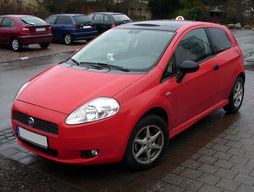
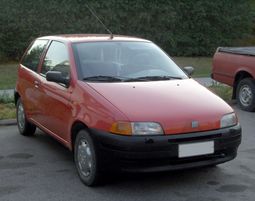
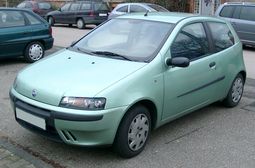
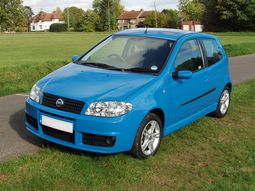
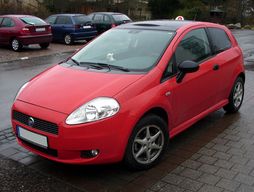
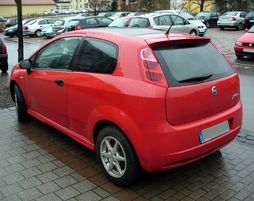
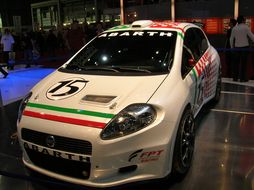
|